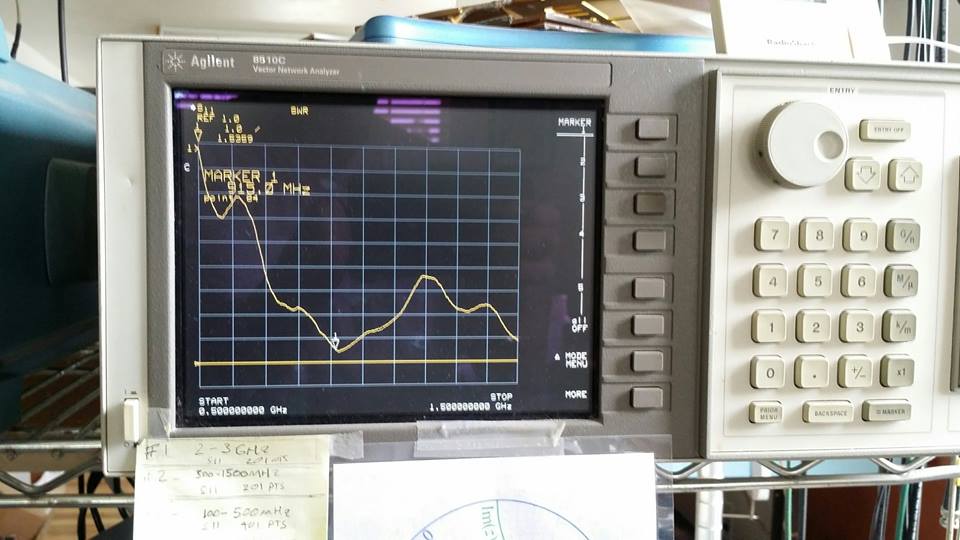You may have wondered why some of us keep yammering on regarding “Common Mode Current” on the coax, and why common-mode prone designs (like end-feds and JPoles) are so problematic. Here’s an example of a 915 MHz antenna for a wideband comm system prototype I am designing. I decided on a wide-band vertical dipole.
In the pix below, we see the dipole front, and the dipole rear in it’s final form (sans heat shrink) – with a single loop binocular type 61 core performing the 1:1 current BalUn / choke function (they are the same thing):
Also we see the test fixture, with the finished heat-shrinked antenna attached – it is simply an empty box, same as what the RX and TX are going in. Also has the same copper tape ground plane:
Here are the “money shots” ===>
— FIRST SWR PLOT is the typical wideband dipole response of the antenna on the test fixture (as shown above) sitting on the bench – WITH the type 61 1 loop binocular Choke:
— SECOND SWR PLOT is with me holding the test fixture and antenna up in the air – WITH Choke (notice that there is almost no difference in the SWR curve from when it was sitting on bench):
— THIRD SWR PLOT is with me holding the test fixture box up in the air, but WITHOUT the Choke – Yikes SWR increases and curve is destroyed !!! 

 !!!
!!!
IOW, WITH the choke, the transmission line and box are decoupled from the antenna. However WITHOUT the choke, the box, the transmission line, any cabling, and ME are ALL part of the antenna, and we see the resultant poor SWR.
What we don’t immediately notice is the lowered efficiency, noise pickup, destroyed radiation pattern, etc…
Anyway, hope this helps demonstrate why good designs ALWAYS use a choke when common-mode can be a problem.
2,716 total views, 1 views today





